Types of AI Algorithms and How Do They Work?IntroductionAll algorithms have the potential to be simple, but AI algorithms are inherently more complicated. Algorithms with artificial intelligence (AI) learn by ingesting training data. The primary distinction between various AI algorithm types is how that data is obtained and labelled. 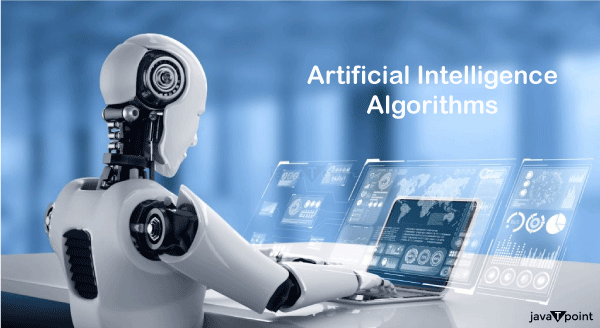
Fundamentally, an AI algorithm utilizes training data?labeled or unlabeled, provided by programmers or obtained by the program itself?to learn and advance. After that, it uses the training data as a foundation to do its responsibilities. Certain AI systems may be trained to adapt and improve their operations on their own by absorbing new data and learning from it. Others will need a programmer's assistance to simplify. Types of artificial intelligence algorithmsSupervised learning, unsupervised learning, and reinforcement learning are the three main types of AI algorithms. These algorithms' main distinctions are in how they learn and how they work. 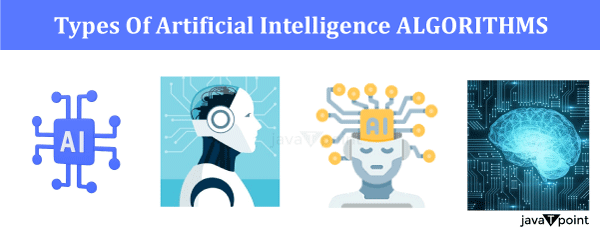
There are hundreds of distinct algorithms under those categories. We will discuss which of each category is the most widely used and well-liked, as well as often utilized situations. 1. Supervised learning Algorithms:"Supervised learning" is the earliest and most widely utilized category of algorithms. These operate by receiving well-labeled data, training on it, then applying it to gain knowledge and develop. It forecasts the results of test data using the labelled data. The phrase "supervised learning" refers to learning that takes place while a learner is observing an instructor or other expert. 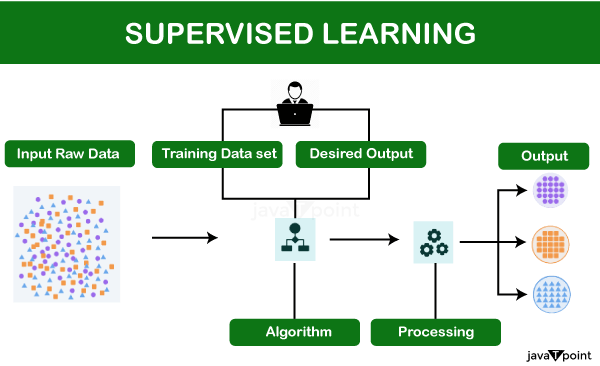
Developing an effective supervised learning algorithm requires a group of committed specialists to assess and scrutinize the outcomes, in addition to data scientists who verify the models the algorithm generates by comparing them with the original data and identifying any inaccuracies from the AI. Classification and Regression:Let's go straight into describing the various kinds of supervised learning algorithms below. They may all be used to regression, classification, or both. Classification is the use of binary (0 = no, 1 = yes) to get an either/or conclusion. Thus, things will only ever be categorized by the algorithm as one or the other, never as both. Multi-class categorization pertains to the arrangement of data into predetermined categories or kinds that are pertinent to a certain need. Using regression, a real number?either a number that is rounded off or a decimal point?will appear at the conclusion of the output. The method typically uses the data from the dependent and independent variables to estimate a potential alternative outcome (either forecast or generalized estimate). Decision Tree:Decision tree, a popular supervised learning technique, is named as its tree-like structure, despite the fact that the tree is inverted. The training datasets serve as the tree's "roots," leading to particular nodes that represent test attributes. Nodes commonly connect with adjacent nodes. A node which does not go farther is referred to as a "leaf." All the data is categorized into decision nodes via decision trees. It makes use of a selection criterion known as Attribute Selection metrics (ASM), which considers a number of metrics (entropy, gain ratio, information gain, etc. are a few examples). The decision tree may categorize the data it is provided by following the training data into sub-nodes until it reaches the end result, using the root data and according to the ASM. Random Forest:As suggested by its name, the random forest method is really an extensive set of various decision trees. To get more accurate outcomes, the random forest constructs many decision trees and links them. These are applicable to regression as well as classification. Support Vector Machines:Another popular AI method that may be used for regression or classification (though it is typically employed for classification) is the support vector machine (SVM) algorithm. Each piece of data is plotted on a chart (in N dimensional space, where N = the number of datapoints) in order for SVM to function. Next, the hyper place that divides each class is found using the method to classify the datapoints. More than one hyperplane is possible. Naive Bayes:Because it is predicated on Bayes' Theorem and substantially depends on the sweeping assumption that the existence of a single characteristic is independent of the existence of other features in the same class, this method is known as "Naive Bayes." The "naive" part of the name refers to the primary premise. Massive data sets with several classes may benefit from the usage of Naive Bayes. It is a categorization algorithm, much as a lot of other supervised learning methods. Linear Regression:Regression modelling uses the supervised learning AI technique known as "Linear regression". Finding the connections among data points, forecasts, and predictions is mostly how it is employed. It functions similarly to SVM by displaying data points on a chart where the dependent variable is plotted on the Y-axis and the independent variable is shown on the X-axis. After that, a linear plot of the data points is created in order to ascertain their link and project potential future data. Logistic regression:A logistic regression technique typically estimates values from a collection of independent variables using a binary value (0/1). Logistic regression yields a yes/no result, either 1 or 0. An email spam filter is one instance of this. To determine whether an incoming email is spam (0) or not (1), the spam detection program uses logistic regression. Only in cases where the dependent variable is categorical?that is, either yes or no?can logistic regression be helpful. 2. Unsupervised Algorithms:Compared to supervised learning, it could now be rather simple to infer the meaning of unsupervised learning algorithms. The data that is sent to unsupervised learning algorithms is unlabeled. In order to add additional meaning to the data, unsupervised learning algorithms employ the unlabeled data to build models and assess the connections between various data points. 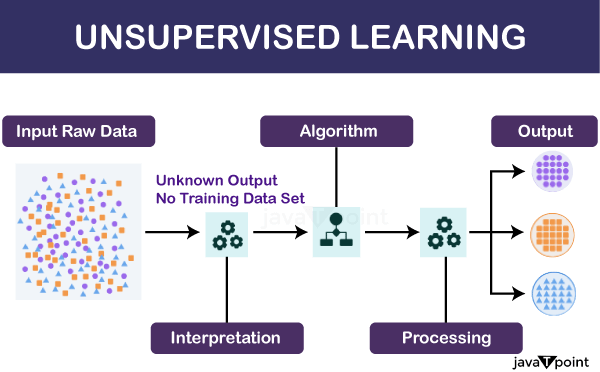
Clustering:Several unsupervised learning methods arrange the unlabeled data points into pre-established groups, a process known as "clustering". Each data point should only be a part of one cluster, with no overlap, according to the objective. K-means clustering:K-means is an algorithm that is intended to carry out unsupervised learning's clustering functionality. In order to achieve this, it plots all of the data, independent of the cluster, using the pre-established clusters. Next, it shows a randomly chosen data point as the centroid for every cluster (imagine it as a circle with that particular data point at the precise center). The remaining data points are then grouped into clusters according to how close they are to one another and to the center data point of each cluster. Gaussian mixture model:In many aspects, Gaussian mixture models resemble K-means clustering. Organizing information into predefined groups based on closeness is the focus of both. In contrast, Gaussian models allow for a bit wider variety of cluster forms. Imagine that all of our data points are plotted on a graph. Data can only be grouped using K-means clustering in circular patterns, with each cluster's centroid at its center. Oblong-shaped clusters may be accommodated using Gaussian mixture, which can manage data that falls on the graph in more linear ways. If a datapoint falls within the circle of a cluster, this makes clustering more clear. Both supervised and unsupervised algorithmsCertain AI algorithms are capable of operating with both supervised and unsupervised data input. Depending on their position, they may have somewhat varied uses. K-nearest neighbor algorithm:The K-nearest Neighbour (KNN) method is a basic artificial intelligence technique that maps the supplied data points on a map to illustrate the connection between them, assuming that all of them are close to one another. Subsequently, the method may compute the separation between data points to infer their correlation and plot the result on a graph. It may be used to regression or classification tasks in supervised learning. It's widely used in unsupervised learning for anomaly detection, or identifying and eliminating data that doesn't belong. Neural Networks:A group of artificial intelligence algorithms known as neural network algorithms imitate the operations of the brain of a person. These have uses beyond those covered here and are typically more sophisticated than many of the algorithms covered above. It may be used to classification and pattern recognition tasks in both supervised and unsupervised learning. 3. Reinforcement Learning AlgorithmsReinforcement learning algorithms are the last main class of AI algorithms. They learn by analyzing input from the outcomes of their actions. Usually, this takes the shape of a "reward." 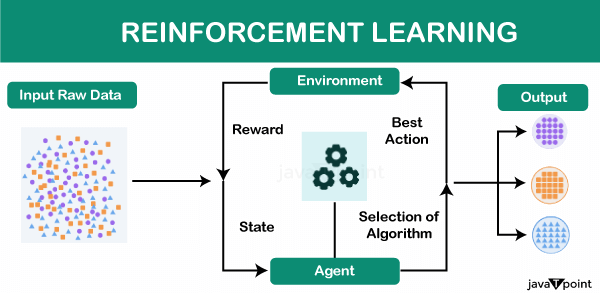
The environment where a task is carried out and the agent carrying it out are the two main components of a reinforcement algorithm. When the environment gives the agent a "state" signal, the cycle starts. This puts the agent in line to carry out a certain task within the setting. Following completion of the activity, the environment notifies the agent via a "reward" signal of what transpired, enabling it to revise and assess its previous action. Then it may do the task once again with that updated knowledge. Unless the environment delivers an abrupt end signal, the process is repeated. The algorithm may use either a negative or positive reward as a form of reinforcement. Definitions: Value, Policy, and ModelAccording to what exactly is being monitored, there are a few minor variations in reinforcement algorithm techniques. The following provides definitions for several models and metrics:
Uses of AI algorithmsAI systems and Algorithms have hundreds of applications. Let us briefly discuss some of important uses of AI algorithms: 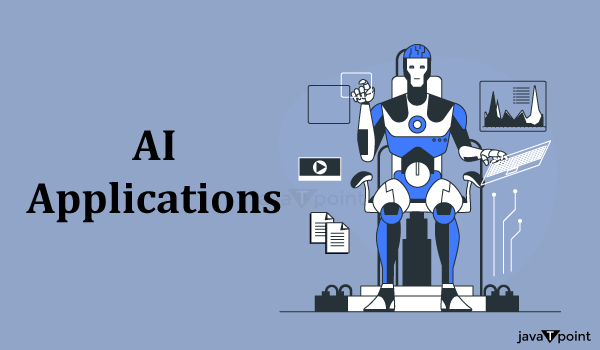
Typical applications for AI algorithms consist of: 1) Voice Assistants:AI-backed Voice User Interfaces (VUI) are used by digital assistants such as Siri, Google Home, and Alexa to interpret and process voice requests. AI allows such apps the flexibility to use large datasets on cloud servers in addition to voice instructions. After then, these programs may process millions of lines of data per second in order to finish jobs and provide customized outcomes from search engines. The understanding of customers has drastically changed, and their comfort levels with this technology have increased. Voice assistant interfaces are developing quickly; in particular, they are being used in the medical field to discover speech indicators for particular conditions. Telehealth apps are also using voice-based chatbots for testing and treatment purposes. 2) Entertainment Streaming Apps:To ensure a flawless user experience, streaming Netflix, Spotify, and Hulu continuously input data into machine learning algorithms. Based on an analysis of the user's interactions with other media, these streaming applications suggest personalized content. These applications generate playlists of songs, films, and television shows that are personalized to the tastes of every user by using AI to sift through the always growing amount of user data. AI is also crucial in ensuring continuous streaming since it automatically assigns users to the servers that are nearest to them. Additionally, bandwidth allotment automatically adjusts according on how well-liked a certain media item is. 3) Smart Input Keyboards:The most recent iterations of mobile keyboard applications use language identification and autocorrection features to provide a seamless user experience. These applications use artificial intelligence (AI) to anticipate the next word in a non-intrusive way, help move between languages, and swiftly repair errors. Artificial intelligence (AI) programmers are training these applications to comprehend the context of the message being entered and provide precise predictions by using the "random forest" machine learning technique. More than 300 varieties of languages are now supported by apps like Typewise and SwiftKey. Recently, more features like embedded search engines and real-time translation have also been added. 4) Travel and Navigation:AI engineers are always working to create applications like Waze and Google Maps. Only machine learning algorithms applied to satellite imagery will be able to cross-check the yottabytes of geographical data that are updated every second. A navigation model that identifies road characteristics on virtual maps in real-time has been newly developed by MIT researchers. Concurrently, these digital maps are produced using satellite images and include data on parking spaces and bike lanes. Frequent path modifications have been made simpler by imaging methods based on Graph Neural Networks (GNN) and Convolutional Neural Networks (CNN). Using predictive models, AI also assists in identifying paths on satellite photos that are covered with natural overgrowth. 5) Gamified Therapy:Since the days of arcade games like Pac-Man and Pong, artificial intelligence (AI) has been used in gaming to create intuitive universes. But up until now, advancements in gaming AI have concentrated on giving players more engaging tasks rather than assessing their mental states. These days, gamified apps are being developed to assess a player's mental toughness while facing an impending loss. This aids in the research of strategies to lessen anxiety and despair in gamers and individuals generally. A few of these gaming apps provide Cognitive Behavioral Therapy (CBT) for improved interaction with the user via the use of Virtual Reality (VR) headsets. As the game proceeds, AI enables these games to adjust to the player's behavior depending on cues that are assessed. 6) Autonomous vehicles:Automated automobile technologies international business interest is driving large-scale innovation in AI. With features like blind-spot detection and cruise control, AI is enabling completely autonomous capabilities. Vehicle autonomy is being taught using Deep Reinforcement Learning (DRL), a kind of machine learning. Many predictive AI algorithms are enabling path planning in the presence of both static and dynamic impediments. Accurately anticipating when nearby cars would swerve, and other unanticipated situations are being considered. This is made feasible by the technique known as simultaneous localization and mapping (SLAM), which uses sensors to provide real-time orientation to the environment. 7) Technologies for Facial Recognition:The Face ID unlock function found in the majority of premium mobile devices nowadays is the most widely used implementation of this technology. The largest obstacle this technology faces is the general apprehension about the gender and racial bias of its use in forensics. Facial recognition software's margin of error is being decreased with the use of Generative Adversarial Neural Networks (GANN). Additionally, these neural networks are being trained to identify instances of illicit Deepfake technology usage. Artificial intelligence (AI) technology that recognizes intention and emotion from facial expressions is also being developed by a number of sectors. Affective computing, often known as emotion AI, is a rapidly developing field of study to measure consumer experience. 8) Security and Surveillance:Keeping an eye on too many CCTV network monitors at once is almost impossible for a human person. Thus, it makes sense that we have felt the need to automate these surveillance operations and improve them even more by using machine learning techniques. AI frees up human observers to concentrate on validating and responding to important situations. Artificial intelligence (AI) video monitoring software handles the continuous monitoring and detecting aspect of surveillance. Artificial intelligence is able to detect abnormal behavior that humans may sometimes overlook. Government institutions and other high-risk public spaces have CCTV cameras that use an extension of AI-based face recognition technologies. Liberal countries are now figuring out how to lessen the possibility that AI monitoring may violate people's privacy. 9) Internet of Things:The convergence of artificial intelligence (AI) with the Internet of Things (IoT) has several prospects for creating intelligent household gadgets that need minimum human intervention to function. Although IoT deals with how gadgets connect to the internet, artificial intelligence (AI) enables these devices to learn from data. IoT enablement involves five major steps: create, communicate, gather, analyze, and act. The depth of analysis determines how effective the last phase, "act," is, and AI greatly enhances this process. AI makes the most of the data collected by sensors on Internet of Things devices. IoT devices may react to human stimuli and need more effectively thanks to the lessons learned from this data across many iterations. 11) Agriculture:Artificial Intelligence is used to detect soil imperfections and deficits in nutrients. AI is used to analyze weed growth patterns using artificial intelligence, computer vision, and machine learning technologies. Compared to human laborers, AI bots can assist in agricultural harvesting more quickly and in greater quantities.
Next TopicAI Ethics (AI Code of Ethics)
|
 For Videos Join Our Youtube Channel: Join Now
For Videos Join Our Youtube Channel: Join Now
Feedback
- Send your Feedback to [email protected]
Help Others, Please Share









